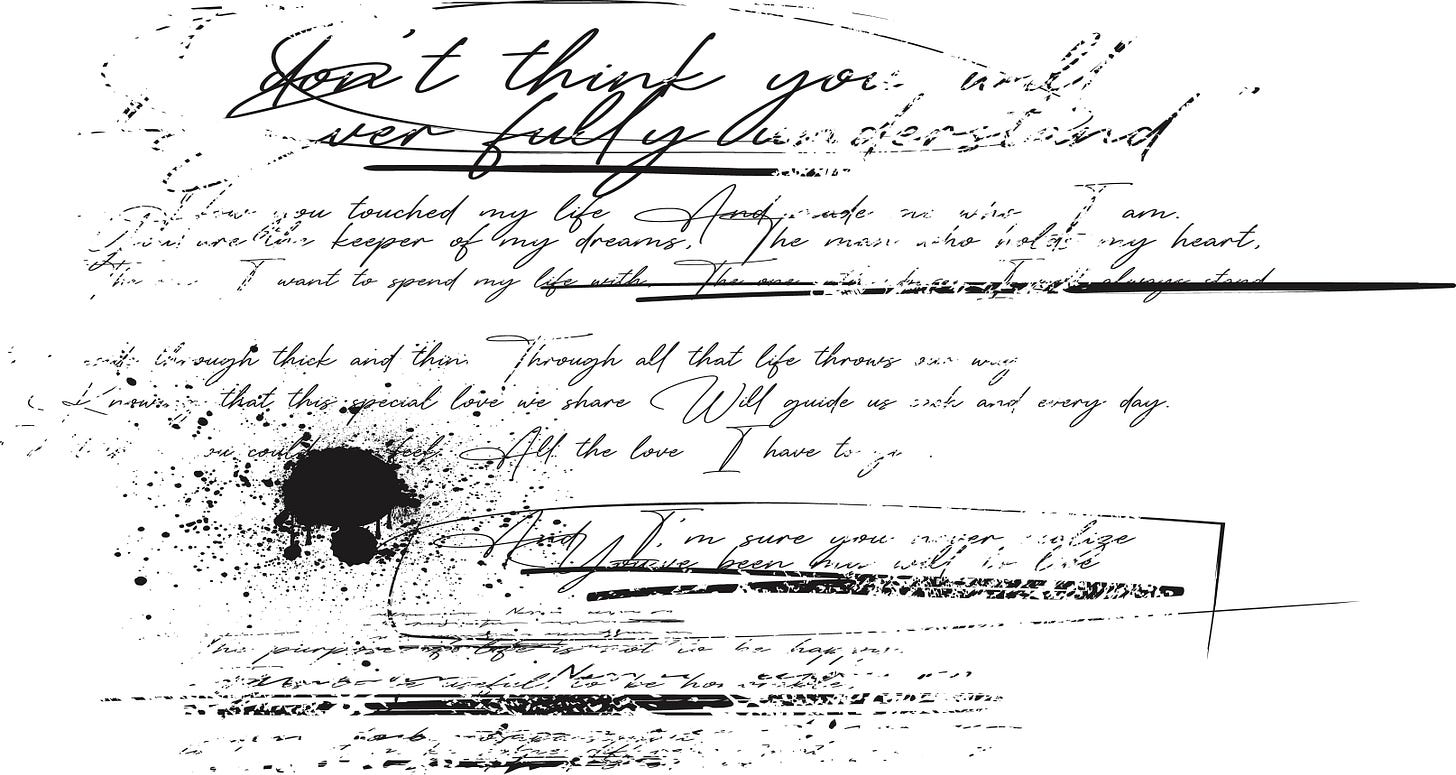Description Needs to Be Relevant
Don't paint your scene, build it
One of the most common things I point out to new writers is the way their description tends to get unruly.
We begin as readers, enamored by the beautiful words that capture us in the stories we love. We think, what it must be like to write like that. To bring such vigor to the imagination. To draw such pictures with words.
How can we do that, too? we ask ourselves.
By describing things beautifully, surely!
This is not incorrect, obviously, but what the unsuspecting writer does then is overstuff their sentences. They tend to open a new scene with a block of description, or they place too much weight on the physical elements of the scene.
We don’t want to hand the reader a picture at the get-go. We want to paint it with them. We want to set the stage, and then lead them deeper, until they’re submerged in the landscape and watching the characters move with it as one—the way we would move within our own world.
That’s done by strategically selecting which pieces get described at what times, ensuring the description is relevant to the stage of the scene.
A chair by any other name
Here’s an example of description-dumping:
The chair was upholstered several times over the years and a patchwork of fabrics showed through threadbare gaps. Scratch marks along the arms proved that Grandpa thought many thoughts as he sat there. Coffee stains dribbled down the right side. There was an area on the back where I had scrawled my name in Sharpie. I was never sure if Grandpa found that. There used to be a footstool that went with the chair—set with mud stains earned after a hard day in the field—but Grandpa’s dog Rosco had chewed one of the legs straight off.
First, we need to ask what’s the point of all this detail. It’s common for writers to describe something like this because they’re trying to portray the room. But unless the chair has a particular purpose in the story—like being revealed as a time traveling chair—we’re spending all this breath without good reason.
The details may be lovely, but the reader does not need them. Too many details can be confusing because we’re not sure what we’re supposed to focus on. Likewise, it can take away from something else you wanted them to conjure.
It’s impossible to transfer the exact image I’m having into your brain because the image you’re having is influenced by your experiences. What style of chair did you initially envisage? Was it a recliner? Did my addition of a footstool send you back to edit that image?
If you had a grandpa who sat in a recliner, that’s probably what you conjured. But if you had a grandpa who sat in an armchair, or maybe a chaise lounge, you’ll invent a different image.
I’m not saying it’s defeatist to try and describe the chair, I’m saying choose your battles. If the chair plays a big role, then by all means, get those details down. We just don’t need a list of details upon a character entering a room—such as when writers want to explain the curtains, the rug, the desk, and the lamp—we need atmospheric signatures.
If you set the tone properly and log just a few quality descriptions, that’ll go a lot farther than listing things we already know make up a room. If you draw just enough to begin the picture, the reader will fill in the rest.
Introduction through interaction
Grandpa walked into Dalton’s office where the sunlight was shrouded by ratty curtains in favor of a yellow-bulbed lamp. The carpet had been worn so close to the concrete, it’d had to be removed. A bowl of cheap mints sat on the desk corner, untouched except by a wayward fly.
While the descriptions above set the tone, none of them are directly relevant. The character/reader doesn’t engage with any of them, making them passive elements that inform the setting.
That’s okay, to a degree, because we need something to start us off, but we want to sink the reader deeper. To do that, we don’t plop a list of details down, we slowly integrate them into the action and dialogue as they become relevant.
Grandpa walked into the dingy office, his shoes hard on the bare concrete floor. The sunlight was choked off by ratty brown curtains and the room smelled of shoe polish. He stood silently, waiting for Dalton to acknowledge him.
Dalton stared dead-eyed at his computer screen, tapping an uncut fingernail on the base of a lamp that cast an oily yellow light. He didn’t seem aware of the sneer that twisted his face.
Irritated, Grandpa stepped toward the desk and dipped his hand into the open mint bowl. A fly darted away.
“Those are not for you!” Dalton snapped.
See how words like oily, dingy, and dead-eyed create a tone more accurately than the latent details of the previous example? They do a good job at informing character. I didn’t mention the carpet because it wasn’t relevant.
I only briefly set the scene with the curtains and the shoe polish, while other things were only brought up once the character interacted with them.
Further, the way the elements of the setting played off character allowed us to really grab onto the scene and be led straight into the actual character engagement.
When used properly, description can be just as functional as action and dialogue. It even adds an extra layer of fun and intrigue.
What narrative device do you wish you were better at? Tell us and we’ll write an article about it.



